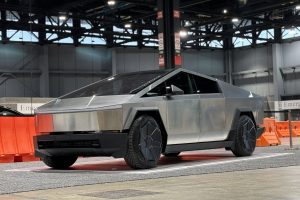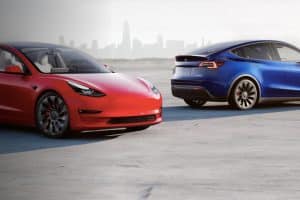- 🚗 NIO’s sub-brand, codenamed Alps, will adopt a LiDAR-less pure vision approach for its smart driving system.
- 📷 The pure vision system aims to keep costs low and will be based on a single Nvidia Orin X chip with no LiDAR.
- 🌐 NIO’s main brand uses the NT 2.0 platform with LiDAR, while Alps, targeting the mainstream market, will utilize the NT 3.0 platform.
- 💰 Alps’ Model Y competitor is expected to start at a more affordable price range of RMB 200,000 to RMB 250,000 compared to Tesla’s Model Y.
- 📉 The cost-efficiency strategy is crucial as Alps enters a saturated market, and keeping costs low becomes a competitive advantage.
- 🧠 Alps’ smart driving system features an in-house developed 5 nm process-based Shenji NX9031 autonomous driving chip.
- 🚙 Alps’ vehicles will compete with the Tesla Model Y in China’s electric vehicle market, where the Model Y holds a significant market share.
- 🌐 The NT 3.0 platform introduces advancements, including the Shenji NX9031 chip, marking a step toward autonomous driving technology.
- 🌍 The global electric vehicle market is witnessing competition, and NIO’s strategic approach with Alps reflects an understanding of market dynamics.
In the ever-evolving landscape of electric vehicles, NIO, one of China’s leading electric vehicle manufacturers, is making waves with its sub-brand, codenamed Alps. The latest reports suggest that Alps is set to revolutionize smart driving by adopting a LiDAR-less pure vision approach, aiming to keep costs low and compete in the mainstream market.
Embracing a LiDAR-less Future
The decision to go LiDAR-less is a bold move by NIO’s sub-brand, challenging the conventional wisdom in autonomous driving technology. Instead, Alps will rely on a pure vision system based on a single Nvidia Orin X chip, signaling a departure from the LiDAR-equipped NT 2.0 platform used by NIO’s main brand.
The Cost-Efficiency Imperative
One of the primary reasons behind this strategic shift is cost-efficiency. As Alps ventures into the competitive mainstream market, where cost is a significant factor for consumers, opting for a LiDAR-less approach becomes a competitive advantage. This move aligns with NIO’s commitment to making electric vehicles more accessible to a broader audience.
NIO’s Platform Evolution: NT 2.0 to NT 3.0
While NIO’s main brand continues to leverage the NT 2.0 platform with LiDAR technology, Alps is set to embrace the NT 3.0 platform. This platform evolution is not just a numerical progression; it represents a leap forward in technological capabilities. The NT 3.0 platform introduces the Shenji NX9031 autonomous driving chip, developed in-house using a cutting-edge 5 nm process.
Affordable Competitor to Tesla’s Model Y
Alps’ strategic vision positions it as a direct competitor to Tesla’s Model Y in China’s electric vehicle market. The anticipated price range of RMB 200,000 to RMB 250,000 for Alps’ Model Y competitor makes it a more affordable option compared to Tesla’s offering. This move not only expands consumer choices but also adds an intriguing dynamic to the competition in the electric SUV segment.
Shenji NX9031: A Technological Marvel
At the heart of Alps’ smart driving system lies the Shenji NX9031 autonomous driving chip. With advancements in the 5 nm process, this in-house developed chip represents a significant stride toward autonomous driving technology. Alps is not merely aiming for cost-efficiency but also positioning itself as a technological innovator in the electric vehicle space.
Market Dynamics and Global Competition
NIO’s strategic approach with Alps reflects a nuanced understanding of market dynamics. The global electric vehicle market is witnessing increased competition, and NIO’s decision to introduce a sub-brand targeting the mainstream market showcases adaptability and foresight. Alps is poised to capture a segment of consumers seeking affordability without compromising on advanced driving technology.





